Exposição: Lords of the Ocean. Treasures of the Portuguese Empire of the 16th-18th centuries
Para esta exposição que incide sobre o comércio que decorreu dos Descobrimentos portugueses, comissariada por Ekaterina Shcherbina, a Casa-Museu vai emprestar dez peças do acervo, representativas das diferentes tipologias que foram transacionadas à época:
- Escritório Indo-português – peça do século XVII, proveniente da região de Sinde (norte da Índia, hoje Paquistão), encomenda da Ordem dos Dominicanos;
- Biombo – peça de laca, feita na China para o mercado de exportação, o pequeno biombo de dez folhas, representa a chegada dos ocidentais à China;
- Prato covo – porcelana da China de exportação, c. 1520-40, decorado com simbologia portuguesa;
- Gomil – peça de porcelana da China, c. 1550-66, decorado com o brasão da família do navegador António Peixoto;
- Vaso litúrgico – peça de porcelana da China, c. 1620-30, decorada com simbologia da Paixão de Cristo;
- Salva – prata, datada da primeira metade do século XVI, apresenta representação de seres imaginários conhecidos como “homem ervado”;
- Salva – prata dourada, primeira metade do séc. XVI, decorada com criaturas marinhas como sereias e monstros;
- Colar e brincos em estojo – último quartel do séc. XVIII, prata, ouro, e pedras incolores;
- Pendente – 2ª metade do século XVII, ouro e diamantes, pendente rendilhado encimado por coroa;
- Adorno de corpete – peça de forma triangular, em prata, ouro e diamantes de finais do séc. XVII, inícios do séc. XVIII.
Local: Palácio dos Patriarcas / Torre da Anunciação – The Moscow Kremlin Museums, Moscovo
Data: 8 Dezembro 2017 – 25 Fevereiro 2018





“For the first time the exhibition to be held at the Moscow Kremlin Museums refers to the history and culture of the Portuguese colonial empire of the 16th–18th centuries. It was the first colonial empire of the early modern period, playing a crucial role in world history. The Portuguese were the pioneers to change the previously existing communication system and to have the civilizations of Africa, South and East Asia so closely connected to Europe. As a result, the intersection of cultural traditions became a perfect ground for entirely new forms to emerge, where the legacy of the East and the West melted and acquired a totally different quality, creating fascinating works of art, unique for their impact.
More than two hundred artifacts from museums and private collections in Portugal, Russia and other countries will help to demonstrate, on the one hand, the magnificence of the Portuguese court, the traditions of Portuguese navigation, science and culture. On the other hand, they will present vivid evidence of mutual influence and cultural exchange between the metropolitan power and its dominions in India, China, Japan, Africa and Brazil…”
in: Página eletrónica The Moscow Kremlin Museums – http://www.kreml.ru/en-Us/exhibitions/moscow-kremlin-exhibitions/vladyki-okeana-sokrovishcha-portugalskoy-imperii-xvi-xviii-vv/

